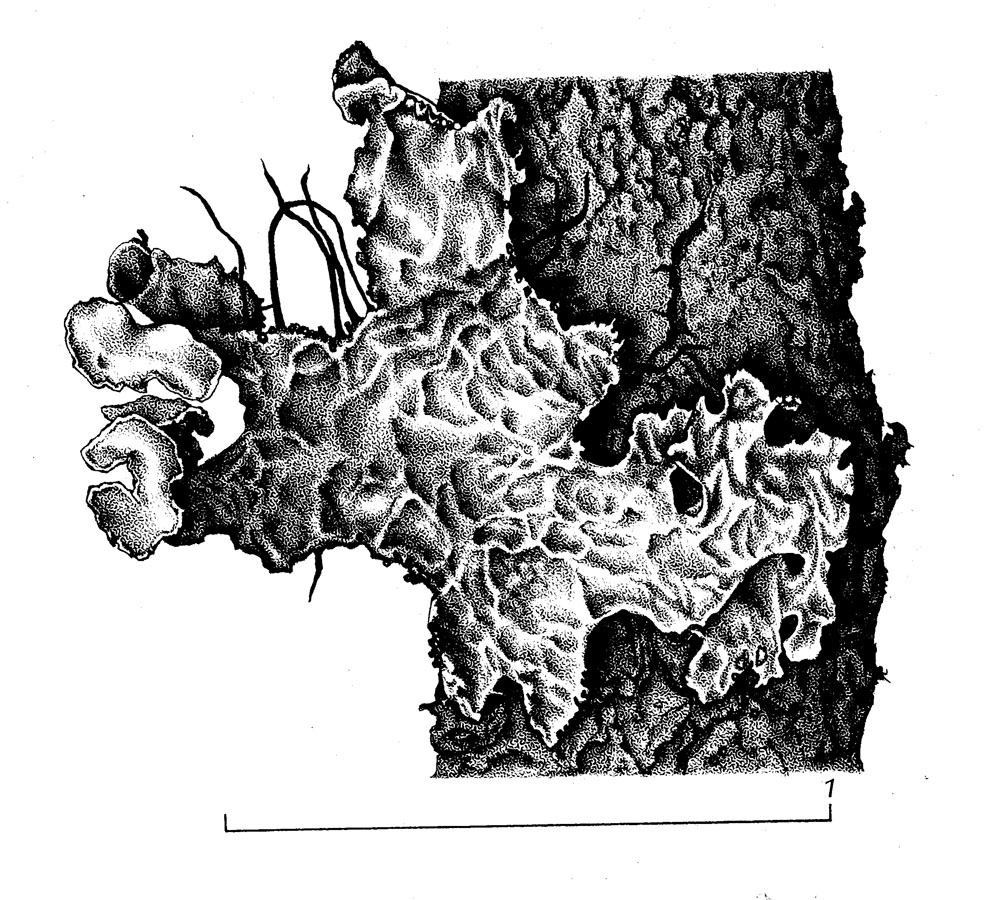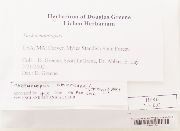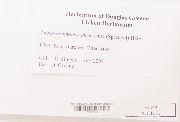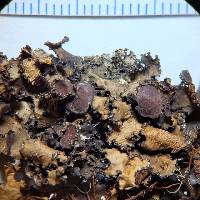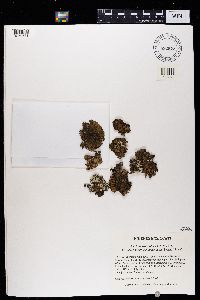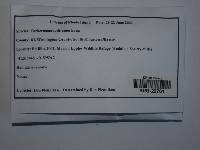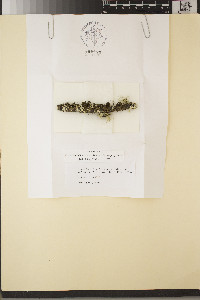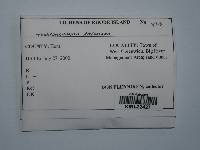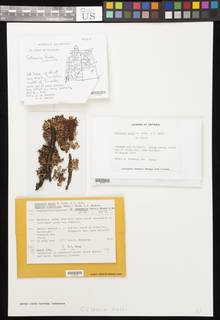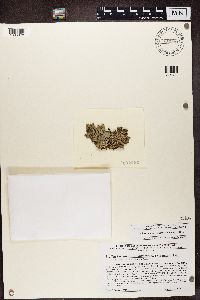Tuckermanopsis americana
|
|
|
|
Family: Parmeliaceae
[Cetraria ciliaris var. halei (W.L. Culb. & C.F. Culb.) Ahti, moreCetraria halei W.L. Culb. & C.F. Culb., Nephroma americana Spreng., Nephroma americanum Spreng., Tuckermannopsis americana (Sprengel) Hale, Tuckermannopsis halei (W.L. Culb. & C.F. Culb.) M.J. Lai] |
Life habit: lichenized (mutualistic with algal photobionts) thallus: foliose (foliaceous), leaf-like [th] upper surface: brown(ish) (if pale: fawn, tan; if mid: cinnamon) | grey(ish) brown | green(ish) brown (olive brown) [th upper surface]: epruinose [th marginal and upper surface] specific structures: present [th margin] cilia, cilioid structures: present [th upper surface] isidia, isidioid structures: absent [th upper surface] soredia, soralia, soralioid structures: absent [th] morphol substructures (eg areoles, lobes, branches) width [mm]: (low) 1.0 (high) 2.5 [th] morphol substructures (eg areoles, squamules): distantly discontiguous [th] morphol substructures (eg lobes, branches): irregular [th] lower surface: brown(ish) (if pale: fawn, tan; if mid: cinnamon) [th lower surface] specific structures: absent | present [th lower surface] rhizines, rhizoid structures: present [th lower surface] rhizines, rhizinoid structures: unbranched, simple ascomata: absent | present ascoma: apothecial, apothecioid hymenial ascoma [mm]: (low) 1.0 (high) 7.0 ascoma: sessile, superficial | subpedicellate, substipitate, subpedunculate, substalked [ascm, if apoth] disc, mazaedium: concave | plane, flat, flattened, expanded [ascm, if apoth] disc, mazaedium: red(dish) brown (if pale: orange brown) [ascm, if apoth] disc, mazaedium: epruinose [ascm, if apoth] margin surface; [if perith] periostiolar area, ostiole, involucrellum: brown(ish) (if pale: fawn, tan; if mid: cinnamon) | grey(ish) brown | green(ish) brown (olive brown) [ascm, if apoth] margin excipular photobionts: present | abundant [ascm, if apoth] subhymenial layers, hypothecium; [if perith] basal excipulum: brown(ish) (if pale: fawn, tan; if mid: cinnamon) | hyaline, colourless [ascm] paraphyses/-oids: present [ascm] epihymenium, epithecium: brown(ish) (if pale: fawn, tan; if mid: cinnamon) asci: lecanoralean [asc] tholus: thickened [asc] tholus amyloidity (iodine reaction): present [asc] tholus amyloidity pattern: amyloid with widening axial body towards the apex (= Lecanora-, Parmelia-, Rinodina-types etc) ascospores: (median) 8.0 [asp] shape: subglobose, subspherical [asp] length [µm]: (low) 5.0 (high) 7.0 [asp] width [µm]: (low) 4.0 (high) 5.0 [asp] septa: absent spore lumen unilocular, monolocular [asp] pigmentation: hyaline, colourless [asp] perispore, epispore: not apparent conidiomata: absent | present conidia: citriform [co] length [µm]: (low) 5.0 (high) 7.0 secondary metabolites: present secondary metabolites: alectoronic acid | arthonin primary photobiont: present secondary photobionts (eg in cephalodia): absent primary photobiont: chlorophytaceous trebouxiaceous, chlorococcoid. substrate: wood dead, living | bark, cork, plant surface trunks, branches, twigs. Thompson, J., 1984. American Arctic Lichens: The Macrolichens. Thallus small, foliose, lobes to 1-3 mm broad, forming rosettes, flat; the upper surface more or less wrinkled, the margins with short cilia and also pycnidia, dull or shining, greenish brown to brown or olive-brown above, the underside white to brown with scattered rhizinae. Upper cortex 12-50 μ thick, algal layer very uneven, the medulla very loose; lower cortex like the upper. Apothecia common, marginal, pedicellate, to 3 mm broad, the margin concolorous with the thallus, inflexed, irregular, the disk brown, dull, epruinose; hypothecium hyaline, upper part of the hymenium and the epithecium brown, hymenium 50 μ; asci subcylindric; spores 8, simple, hyaline, nearly globose, 5-7 μ. Reactions: medulla K + yellow or K -, C - , KC+ red. P-. UV + . Contents: alectoronic acid, with accessory atranorin and/or a-collatolic acid. This specics grows on conifers and old conifer wood as well as , Betula and Alnus. In North America it is common in the eastern deciduous forest but ranges westward into British Columbia and Alaska. It reaches the Arctic along the northern edge of the tree line and on isolated tree stands. This species is also reported from Finland. The other chemical variants of the C. ciliaris species complex, as C. ciliaris with C+ red reaction (containing olive-toric acid) and C. orlxita with C—. KC— reaction (containing protolichesterinic acid) do not reach so far north. Global occurrence: Americas – North America (incl Mexico) | Arctic. Substrate: wood – dead, living | bark, cork, plant surface – trunks, branches, twigs. Life habit: lichenized (mutualistic with algal photobionts). Thallus: foliose (foliaceous), leaf-like; [th] upper surface: brown(ish) (if pale: fawn, tan; if mid: cinnamon) | grey(ish) brown | green(ish) brown (olive brown); [th upper surface]: epruinose; [th marginal and upper surface] specific structures: present; [th margin] cilia, cilioid structures: present; [th upper surface] isidia, isidioid structures: absent; [th upper surface] soredia, soralia, soralioid structures: absent; [th] morphol substructures (eg areoles, lobes, branches) width [mm]: (low) 1.0 (high) 2.5; [th] morphol substructures (eg areoles, squamules): distantly discontiguous; [th] morphol substructures (eg lobes, branches): irregular; [th] lower surface: brown(ish) (if pale: fawn, tan; if mid: cinnamon); [th lower surface] specific structures: absent | present; [th lower surface] rhizines, rhizoid structures: present; [th lower surface] rhizines, rhizinoid structures: unbranched, simple. Ascomata: absent | present; ascoma: apothecial, apothecioid – hymenial; ascoma [mm]: (low) 1.0 (high) 7.0; ascoma: sessile, superficial | subpedicellate, substipitate, subpedunculate, substalked; [ascm, if apoth] disc, mazaedium: concave | plane, flat, flattened, expanded; [ascm, if apoth] disc, mazaedium: red(dish) brown (if pale: orange brown); [ascm, if apoth] disc, mazaedium: epruinose; [ascm, if apoth] margin surface; [if perith] periostiolar area, ostiole, involucrellum: brown(ish) (if pale: fawn, tan; if mid: cinnamon) | grey(ish) brown | green(ish) brown (olive brown); [ascm, if apoth] margin excipular photobionts: present | abundant; [ascm, if apoth] subhymenial layers, hypothecium; [if perith] basal excipulum: brown(ish) (if pale: fawn, tan; if mid: cinnamon) | hyaline, colourless; [ascm] paraphyses/-oids: present; [ascm] epihymenium, epithecium: brown(ish) (if pale: fawn, tan; if mid: cinnamon). Asci: lecanoralean; [asc] tholus: thickened; [asc] tholus amyloidity (iodine reaction): present; [asc] tholus amyloidity pattern: amyloid with widening axial body towards the apex (= Lecanora-, Parmelia-, Rinodina-types etc). Ascospores: (median) 8.0; [asp] shape: subglobose, subspherical; [asp] length [µm]: (low) 5.0 (high) 7.0; [asp] width [µm]: (low) 4.0 (high) 5.0; [asp] septa: absent – spore lumen unilocular, monolocular; [asp] pigmentation: hyaline, colourless; [asp] perispore, epispore: not apparent. Conidiomata: absent | present. Conidia: citriform; [co] length [µm]: (low) 5.0 (high) 7.0. Secondary metabolites: present, alectoronic acid | arthonin. Primary photobiont: present, chlorophytaceous – trebouxiaceous, chlorococcoid. Secondary photobionts (eg in cephalodia): absent. |
|
|
|

